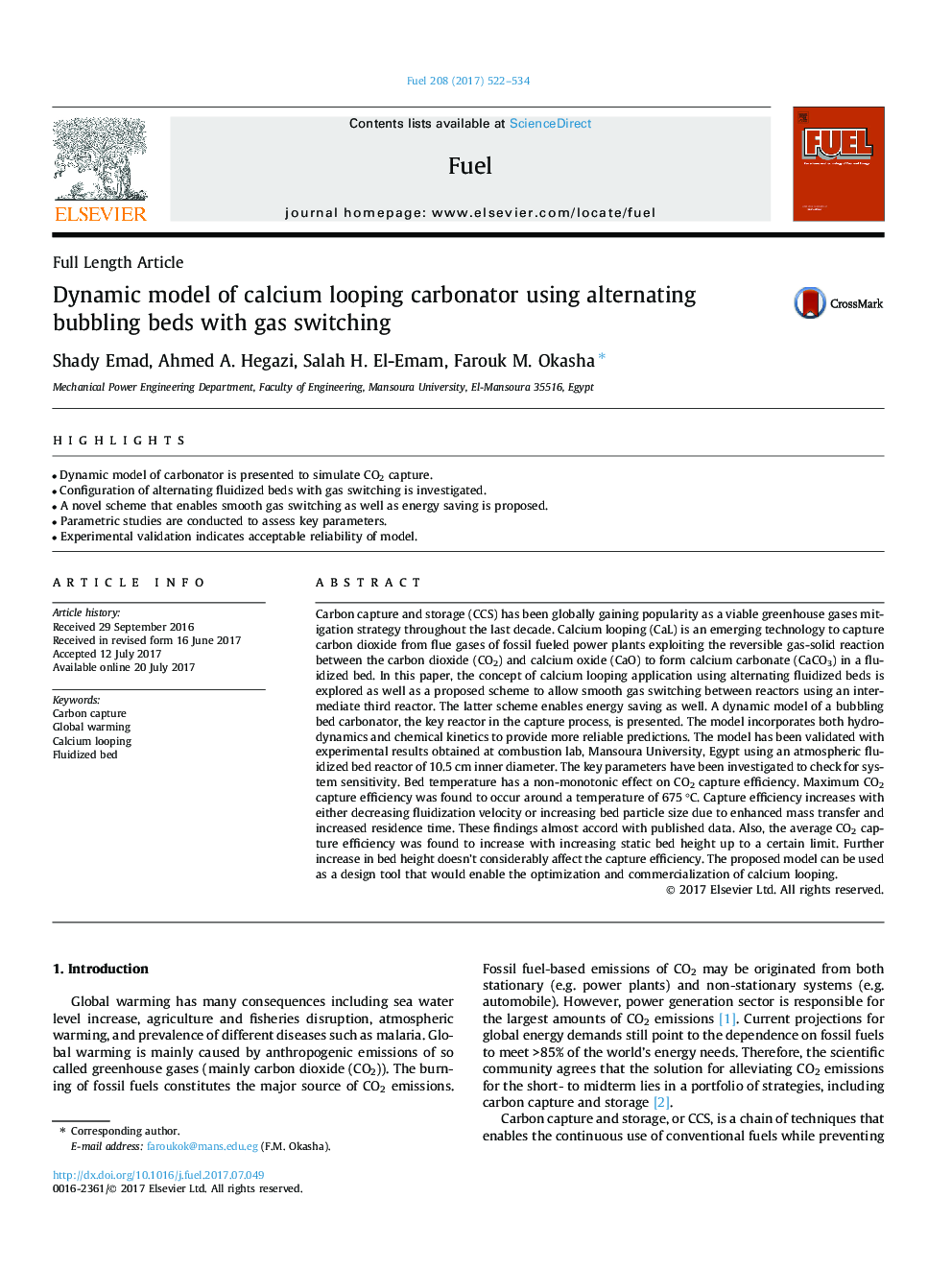| کد مقاله | کد نشریه | سال انتشار | مقاله انگلیسی | نسخه تمام متن |
|---|---|---|---|---|
| 6474167 | 1424956 | 2017 | 13 صفحه PDF | دانلود رایگان |
- Dynamic model of carbonator is presented to simulate CO2 capture.
- Configuration of alternating fluidized beds with gas switching is investigated.
- A novel scheme that enables smooth gas switching as well as energy saving is proposed.
- Parametric studies are conducted to assess key parameters.
- Experimental validation indicates acceptable reliability of model.
Carbon capture and storage (CCS) has been globally gaining popularity as a viable greenhouse gases mitigation strategy throughout the last decade. Calcium looping (CaL) is an emerging technology to capture carbon dioxide from flue gases of fossil fueled power plants exploiting the reversible gas-solid reaction between the carbon dioxide (CO2) and calcium oxide (CaO) to form calcium carbonate (CaCO3) in a fluidized bed. In this paper, the concept of calcium looping application using alternating fluidized beds is explored as well as a proposed scheme to allow smooth gas switching between reactors using an intermediate third reactor. The latter scheme enables energy saving as well. A dynamic model of a bubbling bed carbonator, the key reactor in the capture process, is presented. The model incorporates both hydrodynamics and chemical kinetics to provide more reliable predictions. The model has been validated with experimental results obtained at combustion lab, Mansoura University, Egypt using an atmospheric fluidized bed reactor of 10.5 cm inner diameter. The key parameters have been investigated to check for system sensitivity. Bed temperature has a non-monotonic effect on CO2 capture efficiency. Maximum CO2 capture efficiency was found to occur around a temperature of 675 °C. Capture efficiency increases with either decreasing fluidization velocity or increasing bed particle size due to enhanced mass transfer and increased residence time. These findings almost accord with published data. Also, the average CO2 capture efficiency was found to increase with increasing static bed height up to a certain limit. Further increase in bed height doesn't considerably affect the capture efficiency. The proposed model can be used as a design tool that would enable the optimization and commercialization of calcium looping.
Journal: Fuel - Volume 208, 15 November 2017, Pages 522-534
